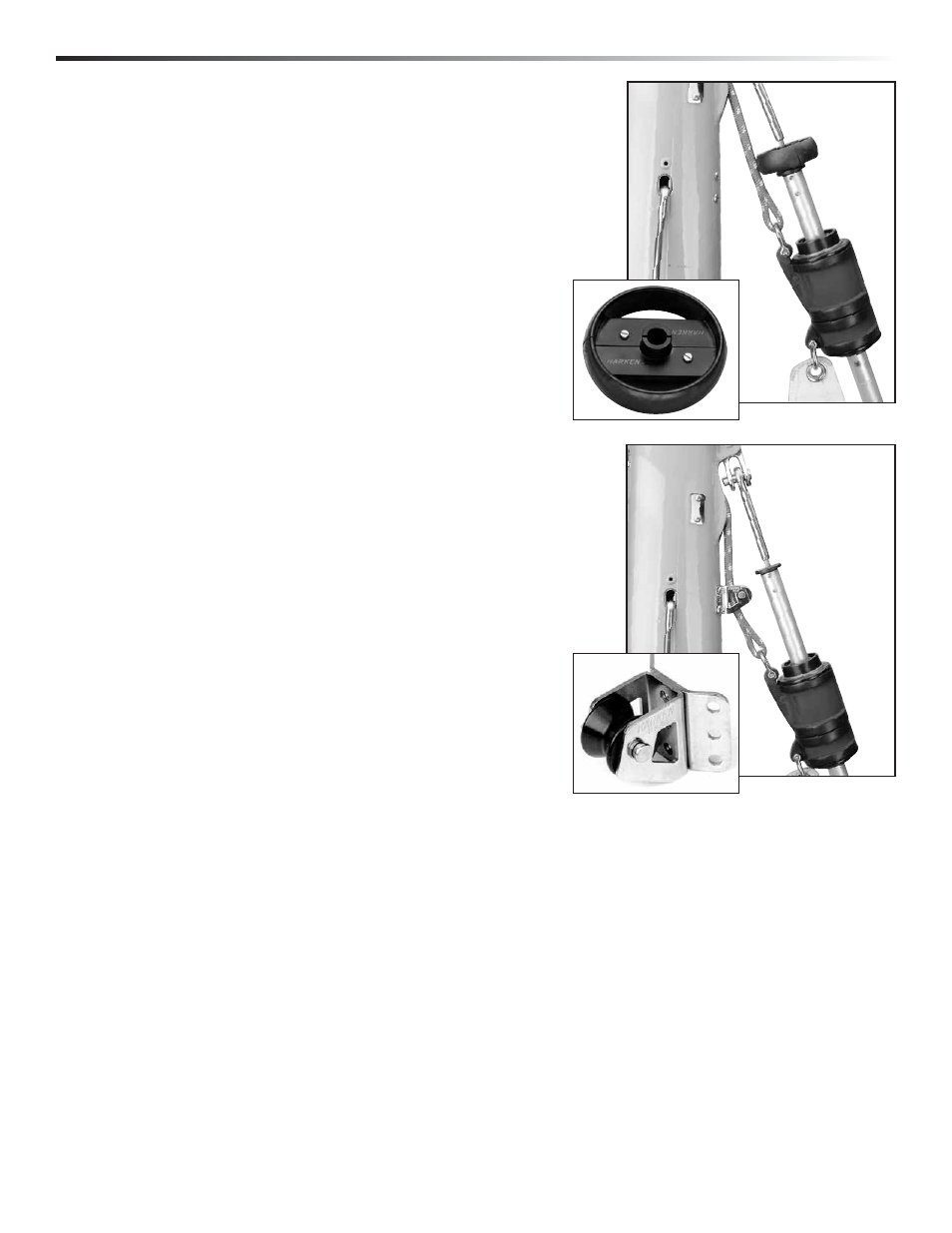Harken 7410.11 MKIV Jib Reefing & Furling User Manual
Page 30

30
MKIV Underdeck Unit 0
Commissioning
Halyard: Restrainer/Deflector/Tension
Halyard Deflector/Halyard Restrainer
To prevent wraps, jib halyard must pull slightly to rear. On most
boats, halyard lead angle is acceptable if halyard swivel is raised
to top of foil.
On some boats halyard sheaves are located too close to headstay
and a Halyard Deflector or a Halyard Restrainer must be used.
Halyard restrainers should be used only when required by mast-
head geometry. Restrainers tend to limit sail luff length and may
cause problems if not installed properly.
If your boat needs a Halyard Deflector, use Part No. 7301 or a
Halyard Restrainer, use Part No. 944.
The Restrainer should be mounted as high as possible on face
of mast. Position restrainer so that foils will not hit it when
under load.
The restrainer should deflect halyard as little as possible or you
may experience difficulty in tensioning sail luff, friction when
furling, and possible damage to foils. To decrease deflection
angles, shorten sail luff.
Tip: Boats used in charter service should have a halyard restrainer,
regardless of masthead geometry.
Halyard Tension
The jib halyard should be firm, but not too tight.
Tip: The luff foil system supports sail along its length so halyard
tension is used only to shape sails, not to support them. Use
enough halyard tension to remove some wrinkles along luff of
sail. Do not tension halyard enough to cause vertical wrinkles in
luff of sail. Tension to adjust position of draft in sail to suit sail-
ing conditions. Halyard should be firm but not tight. If in doubt,
release halyard tension. To protect sail, ease halyard when boat
is not in use.
Halyard Restrainer
Halyard Deflector
